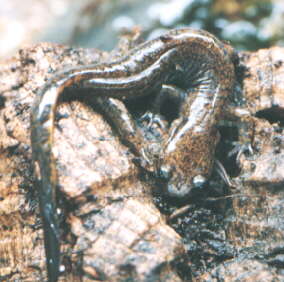


|
Hynobiidae :
Small to medium size (Ranodon up to 200 mm) terrestrial or aquatic salamanders that are distributed in Asia, with one species entering European Russia. All species have external fertilization and aquatic larvae. Recent studies place this group as sister group to the Cryptobranchidae. Members of this assemblage are divided into two subfamilies, the Protohynobiinae (Protohynobius) and Hynobiinae (all others); there are currently 9 recognized genera. Larvae metamorphose completely into adults with eye lids and no gill slits or larval teeth. Onychodactylus (also lacks lungs), Liua shihi, and a few Batrachuperus have claw or horny covers on their hands allowing them to grasp onto slippery rocks in their fast stream habitats. Externally, most species have a generalized tetrapod morphology but a few have long legs and tail. Vomerine teeth (located on the roof of the mouth) are useful characters in distinguishing species and genera from one another. Hynobius retardatus, as well as other species, have displayed a cannibalistic larvae morphology in which they develop wider heads and may eat salamander and frog larvae. There are no derived morphological features (synapomorphies) for this group, but they do show the following characters: 1) septomaxillae present; 2) lacrimal present; 3) vomerine teeth not parallel to marginal teeth row; 4) ribs unicapitate.
Genus :
Batrachuperus (6 species)
Hynobius (31 species)
Liua (2 species)
Onychodactylus (2 species)
Pachyhynobius (1 species)
Paradactylodon (2 species)
Protohynobius (1 species)
Pseudohynobius (2 species)
Ranodon (1 species)
Rhacophorus (69 species)
Salamandrella (2 species)
|
